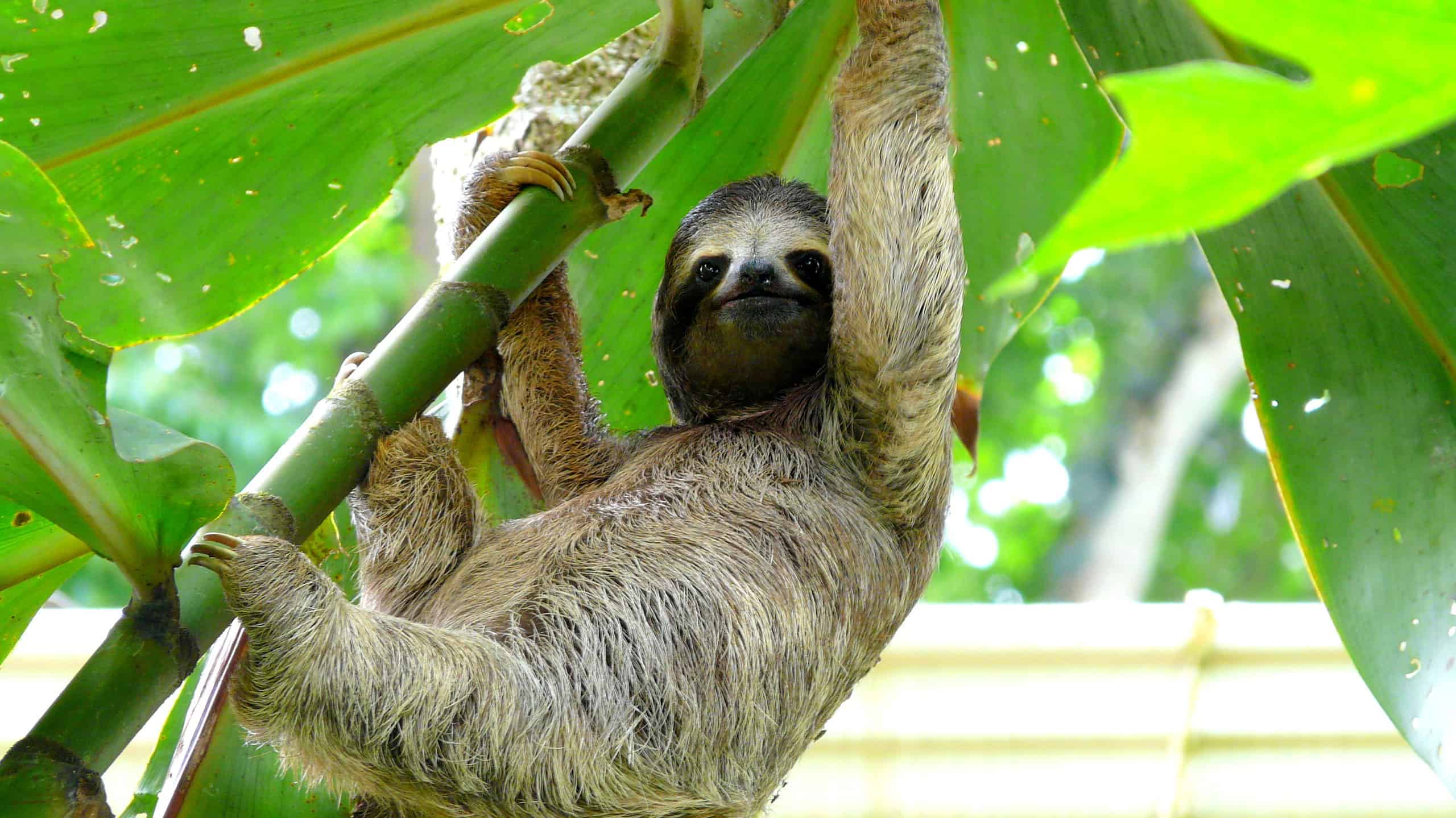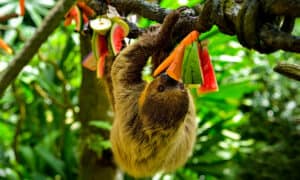Sloths, or specifically “tree sloths,” have always been on the receiving end of jokes poking fun at their speed, or lack thereof. Many people wonder why sloths move so slowly.
In fact, the word “sloth” itself translates to laziness. However, “lazy” may not be the best descriptor considering sloths have evolved over thousands of years to culminate in their best tactic for survival – slowness.
Many biological factors contribute to this surprising survival strategy. There are six main reasons why sloths move so slow. Let’s take a look at each in turn.
1. Life in the Slow Lane: Metabolism
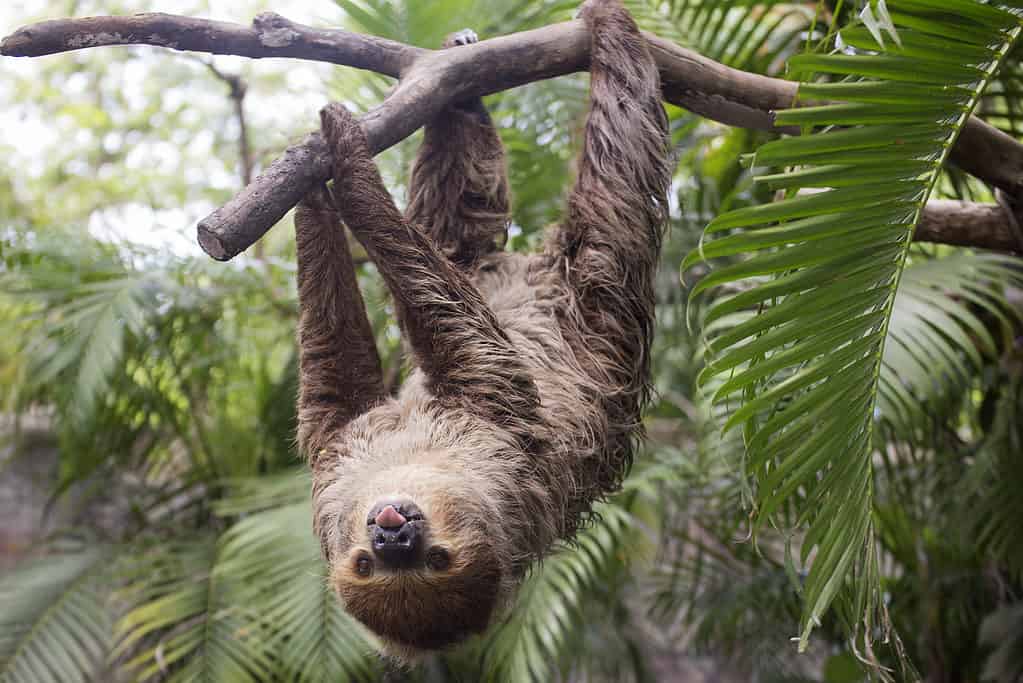
Sloths spend much of their time “hanging” in the trees.
©iStock.com/Kung_Mangkorn
Sloths have mastered the art of taking it easy. The main driving force of this slow lifestyle is their ability to slow their metabolism. Sloths have a very slow metabolic rate – about half of the other animals their size. (Though this isn’t true for two-toes sloths, who have a higher metabolic rate than three-toed sloths. Metabolic rate can also be adjusted to some extent.)
Their sluggish metabolism allows them to conserve energy, allowing them to defy the laws of nature to some extent. They must eat less, but they pay for that with their speed.
2. Nutritional Know-How
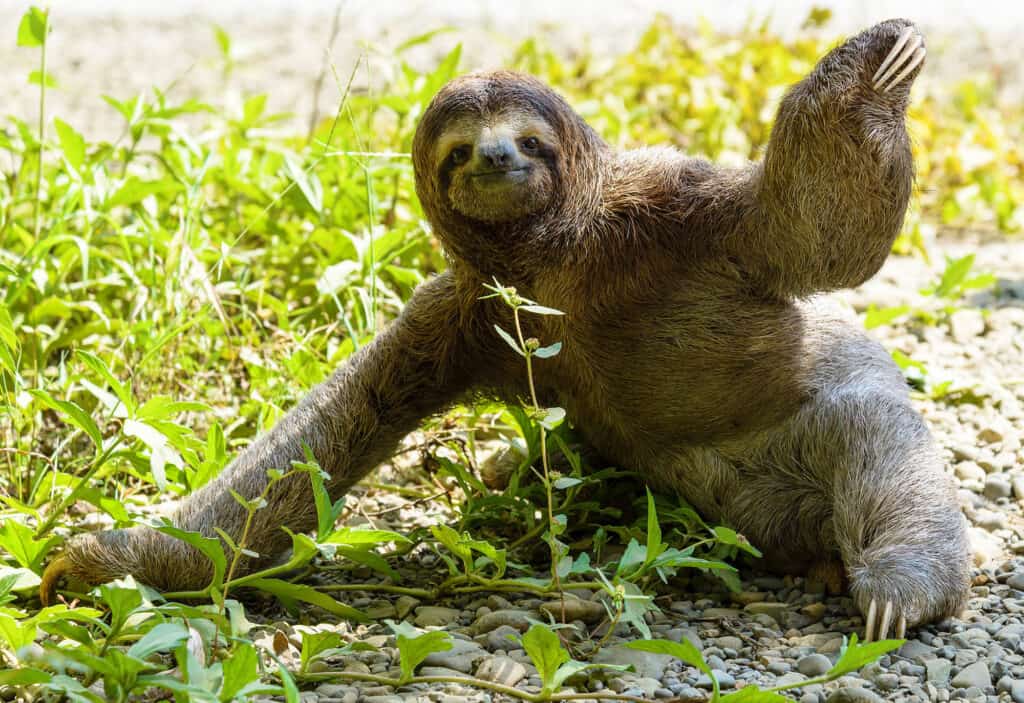
Sloths primarily feed on leaves, and this diet affects their digestive system.
©Sharp/Shutterstock.com
Another reason sloths are so slow is their diet. These charming creatures are folivores, meaning they primarily feed on leaves. Sadly, leaves are hard to digest and have fewer calories. To overcome their dietary challenges, they have developed a nifty digestive system.
(With that said, two-toed sloths do eat a more varied diet than other types of sloths. They may also eat flowers, fruits, buds, and occasionally insects.)
Their stomachs are extremely large (which lets them hold more leaves), and they make specialized bacteria that can aid in the breakdown of plant matter. Each meal must be carefully processed to ensure every ounce of nutrition is extracted.
However, they aren’t particularly very efficient at digesting their food. In fact, sloths have a lower digestive efficiency than ruminants (such as cows and sheep) and hindgut fermenters (such as horses and rabbits). Sloths also have a longer retention time of food in their gut, which increases the risk of fermentation and gas production.
Because they can hold a lot and digest it very well, they don’t have to worry about quickly moving to the next meal. Plus, much of their energy must be sent to their digestive system, slowing the pace of everything else.
3. Energy-Efficient
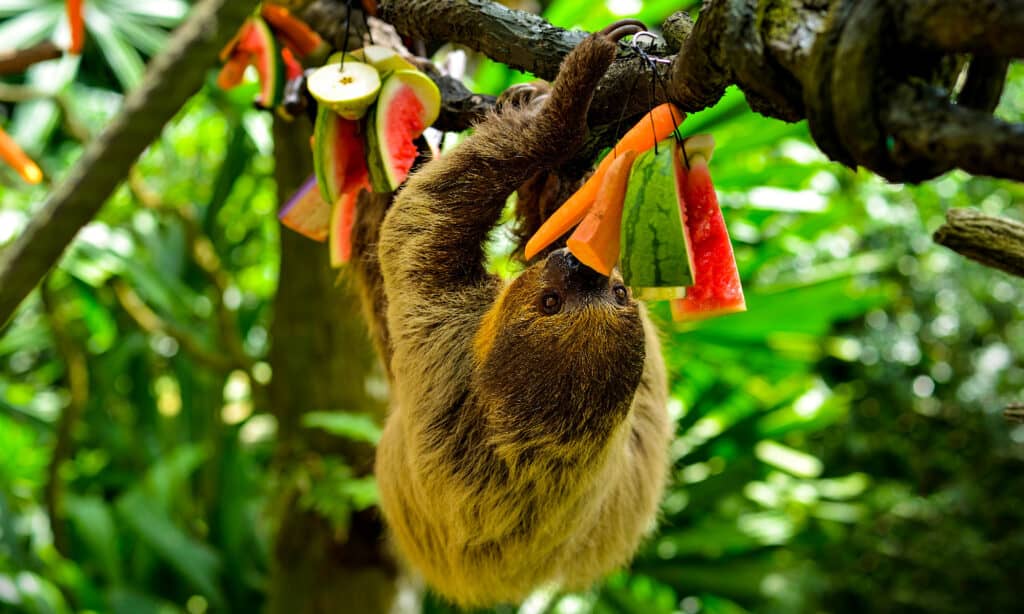
Their lightweight body makes sloths one of the most energy-efficient animals.
©tristan tan/Shutterstock.com
Not only are appliances energy-efficient – animals are too. Sloths are one of the most energy-efficient animals around, with lightweight bodies that are streamlined to their lifestyle. Their muscles are lean and efficient, allowing them to move with minimal effort. By minimizing unnecessary muscle activity, sloths optimize energy consumption and reduce the need for frequent movement.
They don’t have to rush around to find food, in other words.
Their remarkable energy efficiency allows them to live in the trees without expending unnecessary energy. Some sloths also have a lower body temperature, which allows them to spend less energy staying warm. This does vary between different sloth species, though.
4. The Benefits of Slow
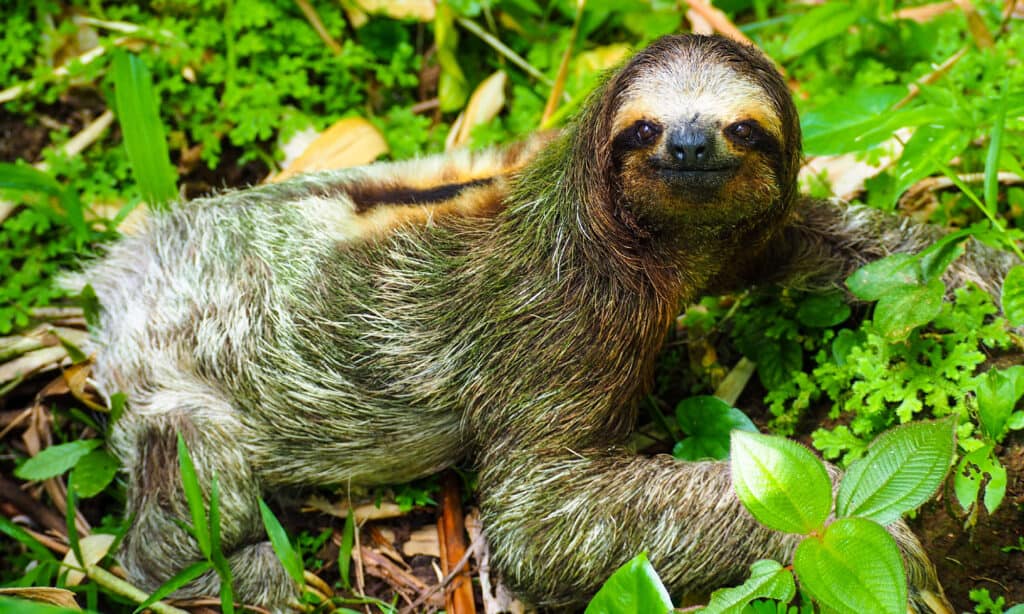
Sloths can grow algae on their fur due to their slow speed, which is why they commonly look green.
©Kristel Segeren/Shutterstock.com
Sloths are also slow because it helps them survive. Sure, they can’t run away from predators, but they do get other benefits.
For instance, their very slow movement provides some excellent camouflage. They’re harder to spot than their fast-moving relatives. Their fur even grows algae due to their slow movement speed, which adds even more concealment.
Furthermore, their slow speed allows them to preserve water, which helps when their resources are limited.
5. Adapted to the Trees
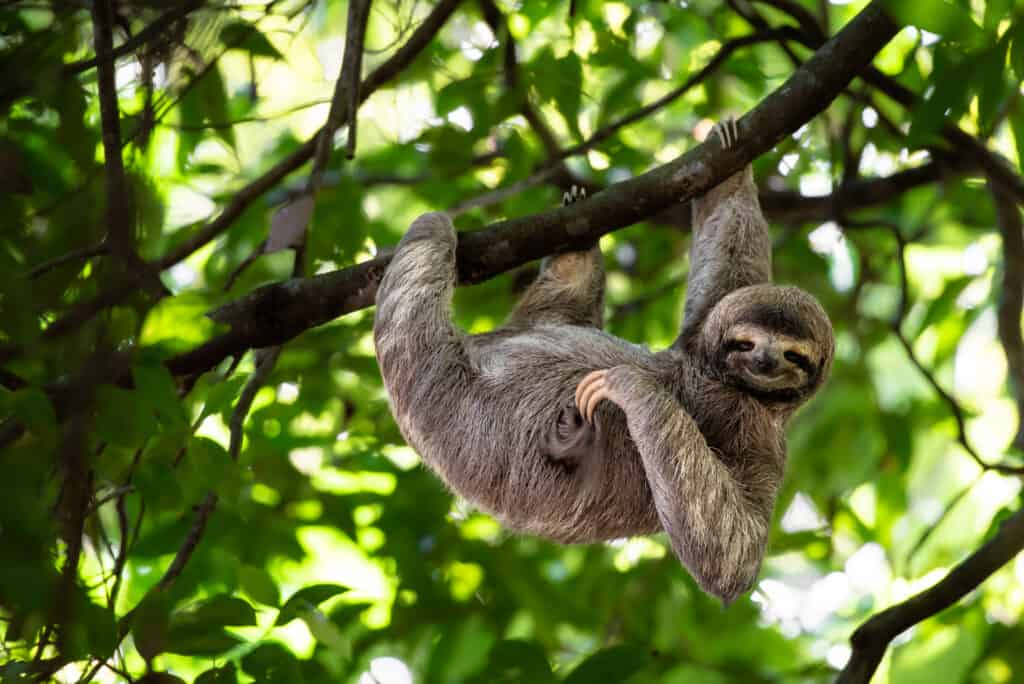
The tree is the natural habitat of the sloth.
©Lukas Kovarik/Shutterstock.com
Sloths are made to hang upside down in the trees. It’s their natural habitat, and they are extremely adapted to it. Their specialized limb structure and unique adaptations allow them to latch onto branches effortlessly. Their long arms and curved claws provide them with an extraordinary grip that allows them to suspend themselves with ease.
Therefore, they simply don’t need to move a lot. They’re at home wherever they are in the branches. They don’t have to rush around like other animals do. They can eat, rest, and even give birth in the same spot.
Furthermore, their excellent grip prevents them from falling, which also prevents them from needing to scurry up into a tree again.
6. Slow Reproduction
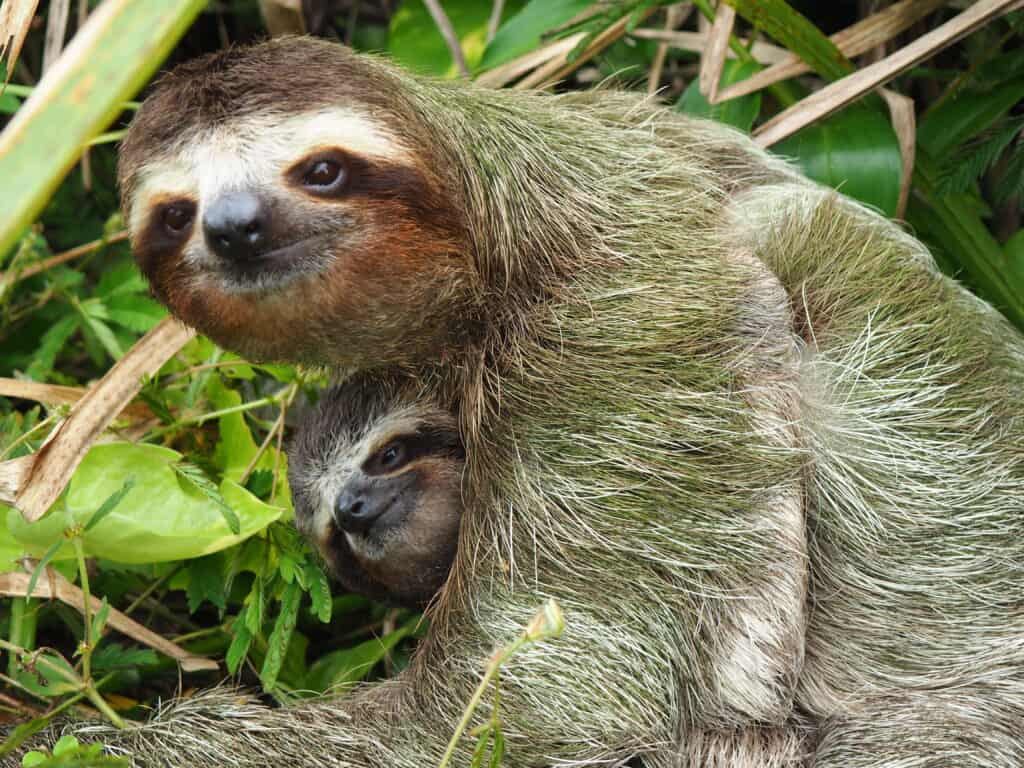
Baby sloths hang onto their mothers for a very long, slowly learning the ways of life in the trees.
©Kristel Segeren/Shutterstock.com
Their slow-motion lifestyle even extends into their reproduction. Females only give birth to about one offspring a year, and their gestation period lasts several months. (This may be due to how much energy their digestive system requires.)
After they are born, the baby sloths hang onto their mothers for a very long time. They slowly learn the ways of the trees and then venture out into the world on their own.
Why Sloths Move So Slow: Final Thoughts
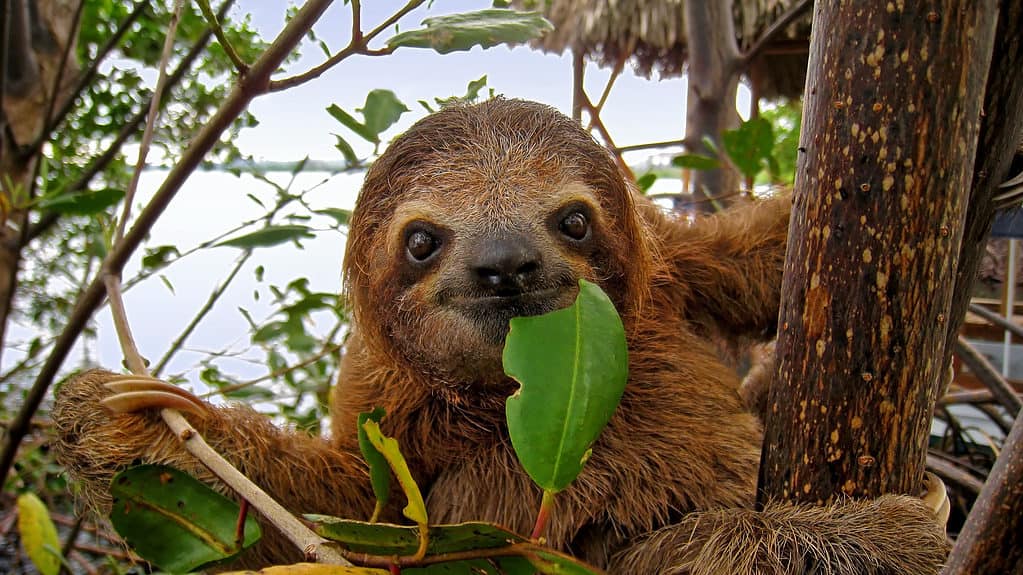
Sloths have adapted to move slowly as a way to survive in the treetops.
©Damsea/Shutterstock.com
In the enchanting realm of sloths, slowness reigns supreme. Through a combination of factors, including a leisurely metabolism, a specialized diet, energy-efficient bodies, and an arboreal lifestyle, sloths have perfected the art of slow living.
These captivating creatures showcase the wonders of adaptation and evolution, demonstrating how nature can produce extraordinary beings with unique lifestyles.
We can all learn something from these slow sloths, though. Next time you rush around, consider how sloths get along just fine at a slower pace – and maybe you will too.
Thank you for reading! Have some feedback for us? Contact the AZ Animals editorial team.

